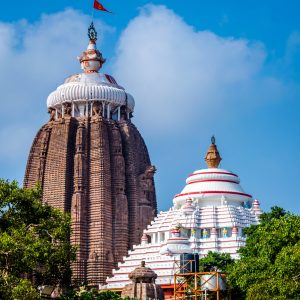Krishna. Understandably the most lovable Vishnu Avatar.
The eighth avatar of Vishnu, Krishna descended on earth to empower good and fight evil. This he did with an array of feats. From slaying demons and lifting mountains to getting a frozen Arjuna to fight on the battlefield. In fact, there was little Krishna couldn’t do and excel at. Nor did he lose his lovable side while accomplishing the impossible. From stealing butter as a child to romancing gopis with his flute.



